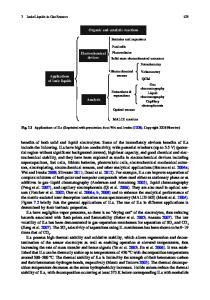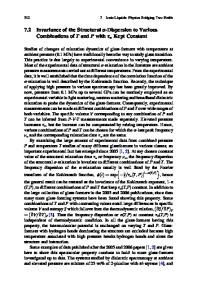Ionic liquids to remove toxic metal pollution
- PDF / 1,066,980 Bytes
- 31 Pages / 595.276 x 790.866 pts Page_size
- 29 Downloads / 371 Views
REVIEW
Ionic liquids to remove toxic metal pollution Vijayalakshmi Rajadurai1 · Brinda Lakshmi Anguraj1 Received: 30 June 2020 / Accepted: 8 October 2020 © Springer Nature Switzerland AG 2020
Abstract Pollution by toxic, non-degradable metals is a rising health concern in the context of increasing industrialization and metal demand. Diseases may include brain damage, cardiovascular problems, gastrointestinal disorders and cancer, calling for advanced methods to clean soil, water, wastewater and air. Here, we review the use of ionic liquids, which are considered as eco-friendly solvents, to remove metals. Ionic liquids have unique properties such as no vapor emission, good solvation ability, higher thermal stability and tunability. Ionic liquids separate efficiently metal ions from aqueous solutions by electrostatic, Van der Waals and ion–pair interactions. Ionic liquids can be recovered by stripping, then reused several times for liquid–liquid extraction, adsorption and membrane separation. Ionic liquids improve membrane stability in membrane separation, and they act as surfactant for adsorption. Keywords Heavy metals · Ionic liquids · Liquid–liquid extraction · Adsorption · Membrane separation process
Introduction Heavy metals refer to any metal and metalloids that have a relatively high density in the range of 3.5–7 g cm−3 (Gautam et al. 2014; Bashir et al. 2018). They are existing elements by nature usually present throughout the earth’s crust; however, they are considered as one of the serious environmental contaminants due to their high toxicity and non-biodegradability (Maximous et al. 2010). These metals are unique and placed under the important class of human carcinogens. They are releasing into the natural surroundings from various sources such as geogenic, industrial, agro, medicinal, and domestic effluents (Tchounwou et al. 2012; Sivarajasekar et al. 2018). Usually, these metals occur only in trace and ultra-trace levels in accordance with geological composition of the catchment basin. Heavy metals are present in water usually in the form of colloidal, granular, and solubilized states. The standard concentration of heavy metals to be present in drinking water as per the Environmental Protection Agency (Gautam et al. 2014) is tabulated in Table 1.
* Brinda Lakshmi Anguraj [email protected] 1
Ionic Liquid Research Laboratory, Department of Chemical Engineering, A.C.Tech, Anna University, Chennai, Tamil Nadu 600025, India
Heavy metals such as Cr, Fe, Mn, Ni, Cu, Co, and Zn are necessary micronutrients needed for chlorophyll synthesis as well as enzyme activation in plants and also stimulate an immune activity and normal growth in humans (Chen et al. 2013; Sreekanth 2010). These metals are predominantly used in pigments, electroplating, alloy and battery manufacturing industries (Pospiech 2015a, b; Sivarajasekar et al. 2018). But the same metals turn into a highly toxic materials, when they discharge into the environment at higher concentrations exceeding the permitted levels. They are highly
Data Loading...











